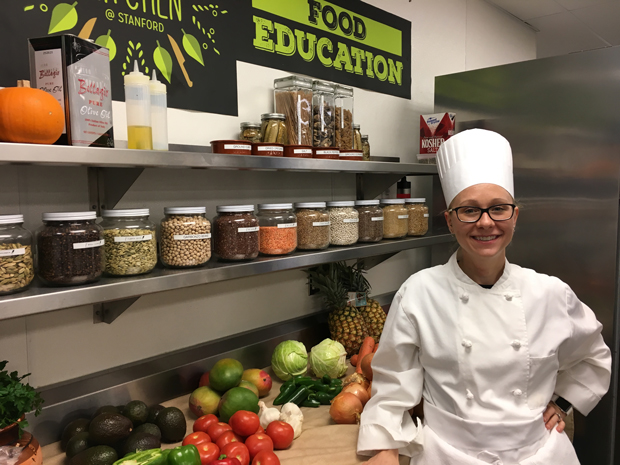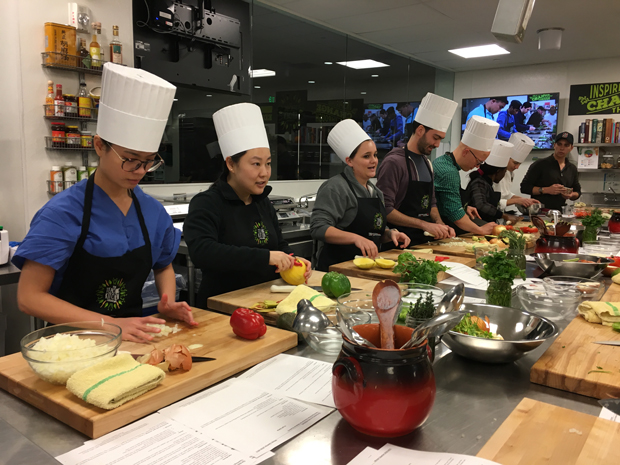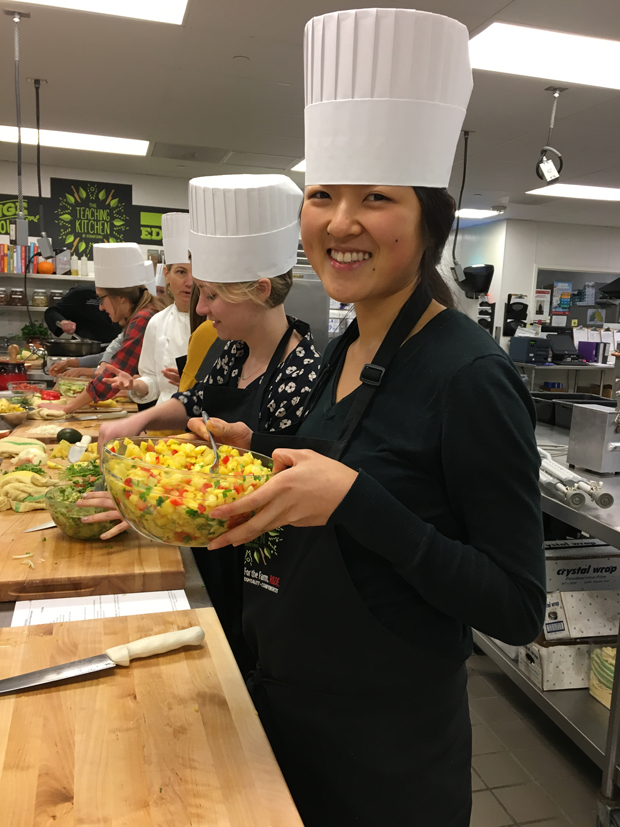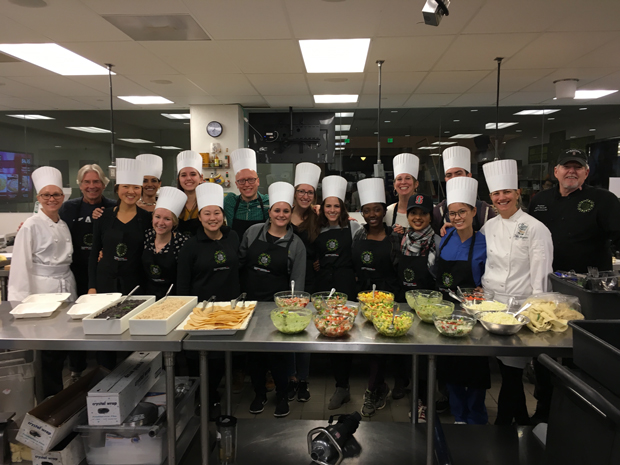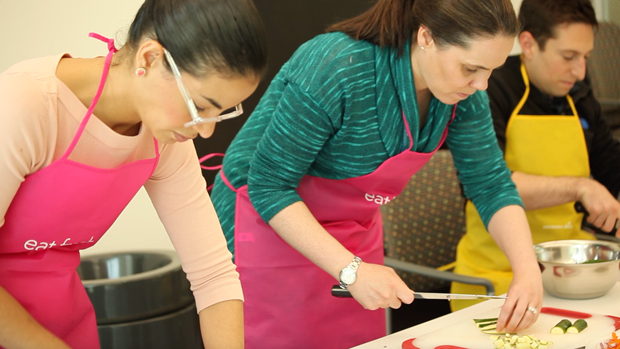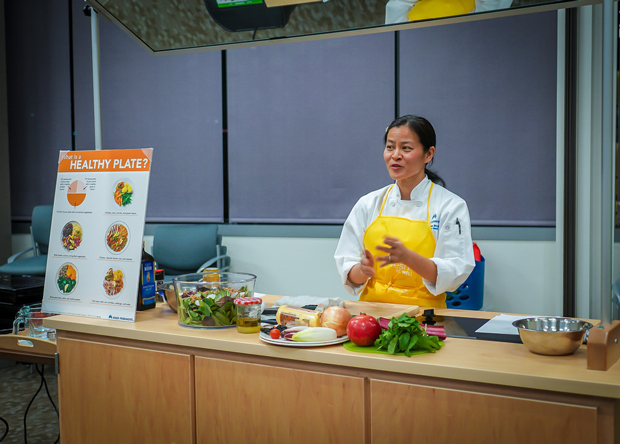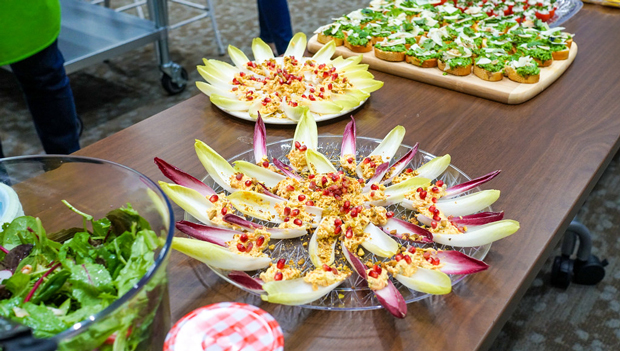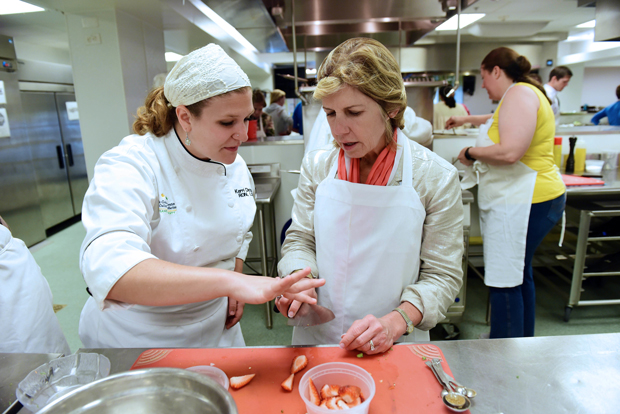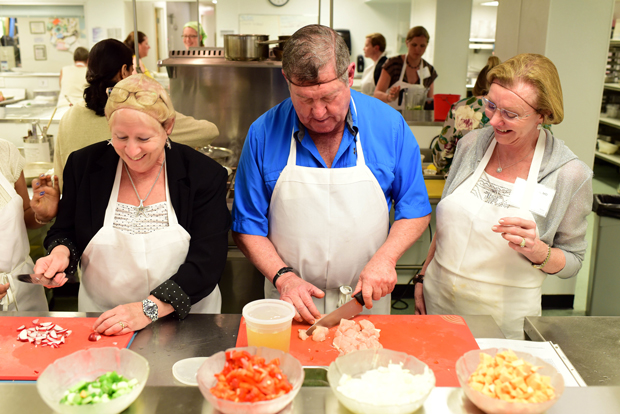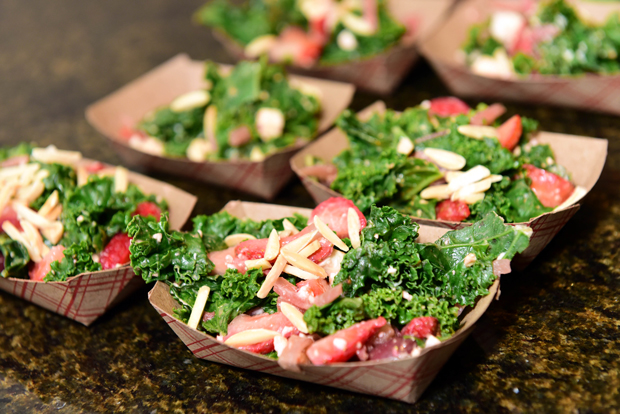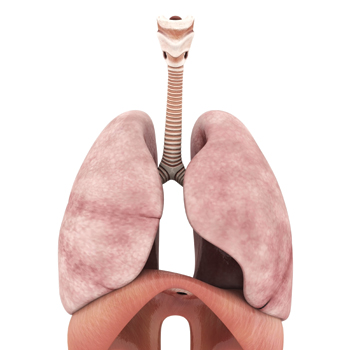Setting a course for food as medicine
Culinary medicine is a growing, evidence-based movement that brings the “food is medicine” philosophy to medical education and beyond.
Even the ancients knew good food could work like medicine, but modern medical training has often neglected to nurture nutritional knowledge beyond basic biochemistry.
For many reasons, there isn't much of a focus on disease prevention in medical school, said ACP Member Michelle Hauser, MD, MS, MPA, a California-based primary care physician. During her own training, she said she was told, “Don't waste a lot of time on counseling people on lifestyle changes because they're not going to do them.”
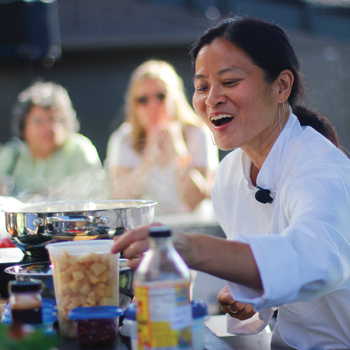
But Dr. Hauser knew this wasn't always the case. Before becoming a physician, she taught college and community cooking classes as a chef certified by Le Cordon Bleu. During this time, she saw the connection between people's cooking skills and their health as they discontinued their hypertension medications, antidepressants, and diabetes medications.
“This was a formative experience that showed me that when I did choose a medical focus later on, I could use what I'd learned teaching these cooking classes and seeing people become healthier through dietary changes driven by healthy, delicious food to influence the way doctors approach trying to help their patients, and themselves, eat better,” said Dr. Hauser.
This attitude captures the spirit of culinary medicine, a growing evidence-based movement that brings the “food is medicine” philosophy to medical education and beyond. Physician-chefs and educators explained how they incorporate culinary teachings in both medical education and their busy practices.
Med school in the kitchen
The first culinary medicine elective in the country for medical students was taught in 2003 at the State University of New York–Upstate Medical University in Syracuse, according to an article published in 2016 by Population Health Management. Only 12 students signed up in the first year, but 73 students joined in the course's second year, said author John La Puma, MD, FACP, a trained chef who co-taught the class.
“It was an indicator that young people were really thirsty for this kind of training and this kind of systematic, clearheaded approach to how to blend the art of cooking with the science of medicine to create restaurant-quality meals that help to prevent and treat disease,” he said.
While the public has shown interest in culinary medicine for at least 10 years, “Medicine is just catching up” by devoting more attention to the field over the past five years, said Dr. La Puma, who now lectures around the country and sees patients once a week at his California-based practice.
In 2013, Tulane University School of Medicine in New Orleans opened the first culinary medicine center at a U.S. medical school. “It is the first and, in many ways, the only kitchen that is dedicated to teaching medical students, residents, health care professionals, and the community,” said Timothy S. Harlan, MD, FACP, a certified culinary medicine specialist and executive director of the school's Goldring Center for Culinary Medicine.
Tulane set a precedent for culinary medicine curricula when it started building its courseware six years ago, he said. Five years ago, it started sharing: The program is now licensed to 39 other medical schools across the country, said Dr. Harlan, who is also associate dean for clinical services and an associate professor of medicine at Tulane.
Program leaders have studied outcomes for medical students and published data from several studies. “This is an evidence-based curriculum, and we have to see evidence-based efficacy and positive outcomes just as you would with any other therapy,” said Dr. Harlan.
In one study, researchers surveyed medical students to compare traditional nutrition education to the culinary medicine elective. Among 627 students (84 of whom participated in the elective), the elective was associated with 72% increased odds of reporting total proficiency in competencies for patient nutrition counseling, according to results published in 2015 by Advances in Preventive Medicine.
The curriculum may also affect patient outcomes. In one pilot, randomized controlled trial of 27 patients with type 2 diabetes, researchers compared outcomes after six months of hands-on cooking and nutrition classes led by a chef, a physician, and a medical student to medical nutrition therapy led by a registered dietitian. Compared to the control group, patients who took the cooking classes had similar HbA1c reduction and significantly greater reductions in diastolic blood pressure and total cholesterol levels, according to results published in 2015 by Diabetes Research and Clinical Practice.
More wide-ranging research has been accepted for publication, said Dr. Harlan. “This is not something that should be thought of as far-out or out there or on the fringe,” he said. “This should be part of what we do on a day-to-day basis and how we interact with our patients.”
At Stanford University School of Medicine in California, Dr. Hauser teaches both in the classroom and in the kitchen, framing nutrition to be more practical, rather than just about how nutrients work in the body. A strictly nutrient-focused approach is “not how anyone in the real world talks about food, so it's not actually very useful for counseling patients,” she said.
The kitchen-based Stanford culinary medicine elective, which is now being offered for the third time in the past two years, is a two-hour evening class held over eight sessions. Most students are in their first or second year of medical school, said Dr. Hauser. As course director, she runs the sessions with two other chefs in addition to periodic guest facilitators, who are usually physicians from different subspecialties, such as cardiology, endocrinology, and psychiatry. “Food is important regardless of specialty,” Dr. Hauser said.
The first portion of class focuses on cooking mainly plant-based meals, since “People do not need help getting more animal products into their diet,” she said. Each session has a theme: For example, students may learn to develop their knife skills before making pico de gallo, guacamole, and fruit salsa, said Dr. Hauser. Then, for the last 30 minutes, everyone sits down and eats together (that evening, students added premade rice, beans, and tortillas to make tacos), she said. “That is where we really try to formally make the connection between what they learned in the kitchen and how they can use that with patients,” by sharing tips and case-based examples, said Dr. Hauser.
Although Dr. Hauser believes more of medical school should ideally focus on nutrition, she said adding to the already full curriculum isn't always possible. “Changes that can be made more easily are to better use the time already allotted to provide more engaging, food-based nutrition education to whet students' appetites for the topic, and then offer more in-depth, hands-on teaching kitchen elective courses,” said Dr. Hauser, who is also a postdoctoral research fellow in cardiovascular disease prevention at the Stanford Prevention Research Center.
Food in practice
Medical school is only one piece of the culinary medicine pie. Internists in practice are also finding practical ways to teach their patients how and what to eat.
As a primary care physician in Los Angeles, Elizabeth Ko, MD, FACP, sees 100 patients in a busy week, many of whom have chronic diseases such as diabetes, obesity, and hypertension. “As internists, we are very good at managing these conditions with medications … but patients aren't always interested in just taking a pill,” she said.
Much of the onus of nutrition counseling falls on dietitians, but patients turn to physicians for advice and knowledge, said Dr. Ko, an assistant clinical professor of medicine at the David Geffen School of Medicine at the University of California, Los Angeles. “Patients truly want to be active participants in their health. Unfortunately, many physicians don't feel comfortable providing nutrition counseling given the lack of nutrition education in medical training.”
ACP Member Linda Shiue, MD, said that after about 10 years of practicing primary care, “I felt like that was the right time for me to try something new with my nutrition counseling to patients.”
Always a food lover, Dr. Shiue started taking her hobby seriously in 2009 when she began writing a food blog. However, she said she didn't realize the connection to her medical practice until she attended Harvard's Healthy Kitchens, Healthy Lives conference in 2012. One week later, she taught her first cooking class to patients, and she later went on to attend culinary school and become a professional chef. She is now director of culinary medicine at Kaiser Permanente San Francisco Medical Center.
But translating healthy habits into practical advice requires simple awareness rather than formal training, said Dr. Ko, who learned how to cook by working in restaurants. “Having a personal interest in food and cooking lends more credibility to me as an educator because I can teach patients that healthy eating is not about deprivation, but about celebration,” she said.
And especially with a good rapport, patients trust and listen to their doctors. “In my own practice, I find that the majority of my patients really do honor and listen to the advice that I provide. The majority of chronic disease is caused by poor nutrition, but the good news is that the problem is also the solution,” said Dr. Ko.
The main ingredient to successful counseling is talking about food in a simple, distilled way, said Dr. Shiue, who also directs Kaiser Permanente's Thrive Kitchen and teaches cooking skills to patients and physicians. “I think one of the big barriers is people think that healthy food is kind of bland, flavorless, textureless, and fat-free,” she said. “We have moved away from that.”
And because cooking is such a useful and low-tech skill, even resistant patients can change their behaviors, said Dr. Shiue. “People come on their own, but others can be convinced, and I like to see them make those changes,” she said.


